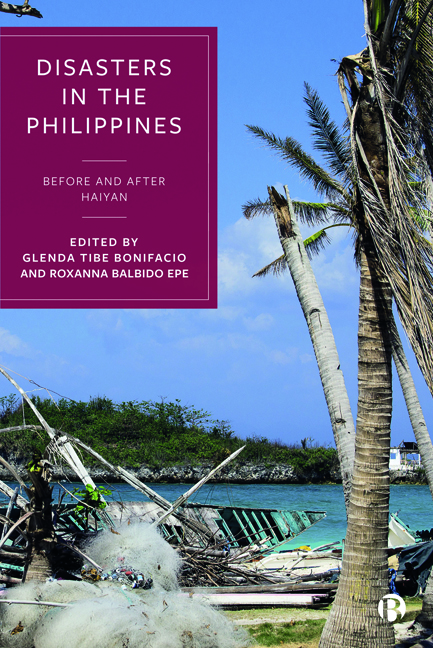13 - Beyond Bayanihan: Overcoming Myths of Community Resilience in Typhoon Haiyan Post-Disaster Recovery
Published online by Cambridge University Press: 18 January 2024
Summary
Introduction
On November 8, 2013, Typhoon Haiyan made landfall in the central islands of the Philippines. The typhoon affected over 14 million Filipinos and displaced thousands of families from their homes. In total, approximately 6,300 individuals were reported dead and 28,688 were injured, but some suspect these numbers are much higher (OCHA 2013; NDRRMC 2014; IBON 2015). Tacloban City, the biggest city on Leyte Island, experienced the greatest amount of physical damage and causalities (NDRRMC 2014). Tacloban is a highly urbanized city and is the administrative center of the Eastern Visayas region (NDRRMC 2014). While Tacloban is considered an economic hub of the Philippines, there are pockets of deep poverty in the city, especially in vulnerable coastal areas. As an effect of the typhoon, Tacloban experienced a deadly storm surge that damaged the vast majority of houses and infrastructures. Taclobanons, the residents of Tacloban City, recount seven harrowing days of search and rescue, burying the dead, looting for food and searching for fresh water as they waited for international humanitarian assistance to arrive (BBC 2013). Several sources have criticized the government for its inadequate risk reduction and disaster preparedness, evidenced by its insufficient disaster budget (Heydarian 2013; IBON 2015). Yet, despite the dangerous and traumatic environments described by many survivors, the national and international media coverage in post-disaster recovery tended to focus on extraordinary narratives of resilience and survival, particularly stories of communities coming together under the banner of bayanihan.
Bayanihan (pronounced as buy-uh-nee-hun) is the Indigenous Filipino spirit of communal unity and cooperation (Sarmenta and Hirano 1999, 675). Gertrudes R. Ang (1979, 91) defines bayanihan as “the ancient Filipino custom of group work,” describing it as “a system of mutual help and concern which has become the backbone of family and village life through the Philippines.” Ang has explained that bayanihan is “derived from the Tagalog root word bayan, a town or nation” so bayanihan means “being in a bayan” (Ang 1979, 91). This is about the Filipino tradition of helping families move their houses, where “[t] he able-bodied men would insert bamboo poles under the locally-made house to facilitate the task of lifting the entire house for relocation” (Adviento and de Guzman 2010, 106).
- Type
- Chapter
- Information
- Disasters in the PhilippinesBefore and After Haiyan, pp. 267 - 286Publisher: Bristol University PressPrint publication year: 2023

